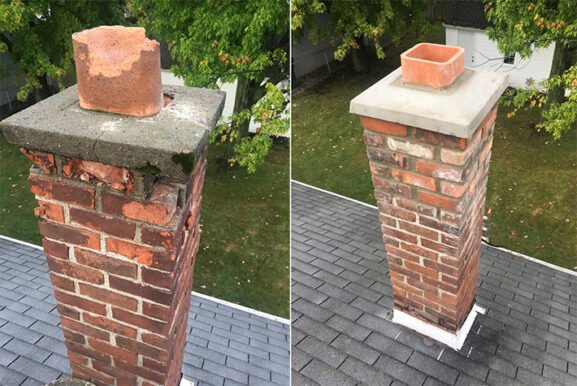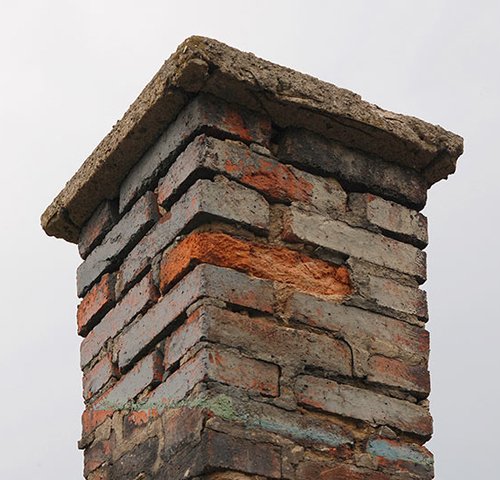Choosing the Best Mortar for Chimney Repair That Lasts
Key Takeaways
- The right mortar mix can greatly increase your chimney’s strength and weather resistance.
- Using modern mortar types like Type N or Type S depends on your chimney’s structure and exposure.
- Historic chimneys may require lime-based mortar to prevent long-term damage.
- Proper mixing and application are just as important as the mortar type itself.
Understanding Why Mortar Choice Matters in Chimney Repairs
Chimney mortar does far more than hold bricks together. It shields your chimney against wind, rain, snow, and even the high temperatures from inside your fireplace. Over time, mortar begins to crack and erode. When that happens, water seeps in, bricks loosen, and structural integrity weakens.
If you choose the wrong mortar during repairs, you can accelerate that damage rather than fix it. For example, using a mortar that is too hard for your brick type can cause the bricks to crack during thermal expansion. That’s why picking the right mortar is more than a technical decision — it’s a long-term investment in your home’s safety.
How Chimney Mortar Differs from General Masonry Mortar
Not all mortar is the same. The mix used for below-grade walls or foundations may be far too rigid for vertical chimney applications. Chimneys are exposed to rapid temperature changes and constant freeze-thaw cycles. Mortar used here must accommodate slight shifts while still holding its bond.
Most chimneys need mortar that is both flexible and strong. Flexibility helps reduce cracking under thermal stress. Strength ensures that the structure resists wind and weight loads over time. Mortars that dry too hard or too soft can lead to issues ranging from surface crumbling to deep water intrusion.
Common Mortar Types Used in Chimney Repair
There are four basic types of mortar labeled by strength from strongest to weakest: Type M, Type S, Type N, and Type O. Each has a specific use based on strength and flexibility needs.
Type N Mortar
Type N is a medium-strength mortar ideal for general-purpose applications. It’s commonly used in chimney repairs because it provides a good balance of strength and flexibility. Type N mortar is made with one part cement, one part lime, and six parts sand.
Its slightly softer nature allows it to expand and contract with temperature changes — crucial for a chimney structure. It is particularly suitable for chimneys above the roofline, where the brick is newer and less porous.
Type S Mortar
This is a stronger mix than Type N, often used in retaining walls and below-grade applications. However, it may also be useful for chimneys in high-wind or earthquake-prone areas where additional strength is needed. Type S has a compressive strength of about 1,800 psi, compared to Type N’s 750 psi.
The downside is that its rigidity can make it unsuitable for older brick structures, which need more flexibility.
Type O Mortar
Type O is a low-strength mortar used primarily for interior, non-load-bearing walls. In some cases, it’s used in chimney repointing for very old or historic chimneys made of soft brick. Its low compressive strength prevents damage to older masonry, making it a gentler option.
That said, Type O isn’t ideal for exterior chimney applications exposed to severe weather unless your chimney has historical value and the bricks demand it.
Lime Mortar
Traditional lime mortar is essential when working with older homes and historic chimneys. It’s far more breathable and flexible than modern Portland cement mortars. Many historic preservation organizations recommend it to avoid damaging original masonry.
For example, the National Park Service’s preservation brief on mortar emphasizes the use of lime mortar for historic masonry, highlighting that newer mortar types can cause permanent damage to heritage structures.
Matching Mortar to Chimney Age and Brick Type
Older bricks, especially those made before the 1930s, are softer and more porous than today’s denser versions. Using a hard mortar like Type S or M with old bricks often leads to cracking or spalling — where the brick face flakes off.
In these cases, a lime mortar or soft Type O mortar is safer. It allows the mortar to fail before the brick does, which is ideal because mortar is easier and cheaper to replace.
For newer chimneys, particularly those built in the last 50 years, Type N is often the best choice. It delivers the right amount of support without being too brittle under temperature shifts. Always consider the age and condition of your bricks before selecting a mortar.
Environmental Exposure Should Influence Your Choice
Climate plays a significant role in how mortar performs. If your home is in an area with harsh winters, frequent rainfall, or high humidity, mortar needs to resist water penetration while maintaining elasticity.
In regions with constant freeze-thaw cycles, mortar that’s too rigid will crack more easily. Type N or a customized lime-cement blend tends to hold up best under these conditions.
For homes in hurricane zones or areas with strong wind loads, Type S may offer the extra strength needed for chimney stability. Just be cautious about pairing it with the correct brick type.
Best Practices for Mixing and Applying Chimney Mortar
Choosing the right mortar is only part of the job. Proper mixing and application are essential for durability. The mix should be consistent and not overly wet. Too much water weakens the mortar and increases shrinkage.
Joints should be cleaned thoroughly before applying new mortar. Any loose or deteriorated sections need to be removed back to solid material. Apply the mortar in layers and finish it with a jointing tool that compacts the surface and helps repel water.
Once applied, mortar should be protected from rain and temperature extremes for at least 24 to 48 hours to allow proper curing.
Chimney Maintenance Starts With Smart Material Choices
Repairing chimney mortar isn’t just about sealing cracks or filling gaps. It’s about using the right materials that respect the structure’s age, condition, and local environment. When chosen wisely, the best mortar for chimney repair can extend the life of your chimney by decades.
A long-lasting chimney depends on a combination of thoughtful product selection and skilled application. Whether your chimney is part of a historic home or a modern build, there’s a mortar mix suited for your needs. A careful evaluation of your structure, climate, and long-term maintenance goals is the key to a repair that holds up over time.

